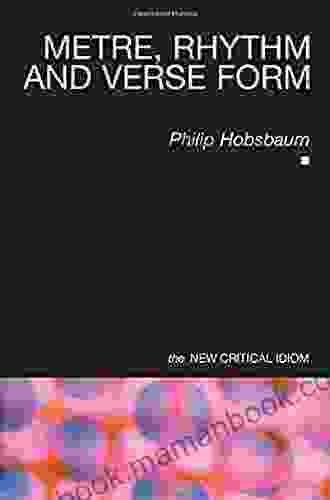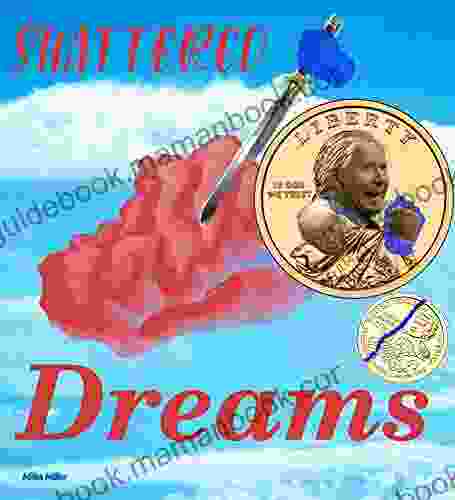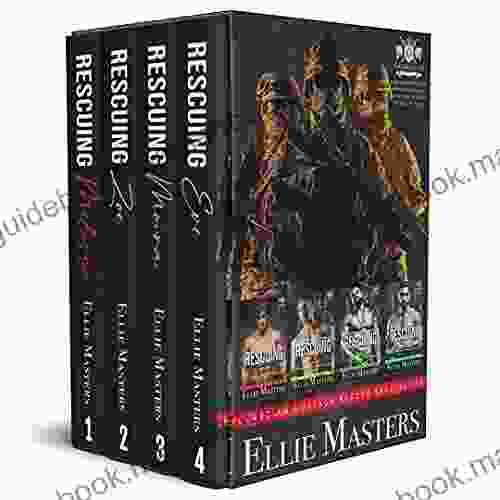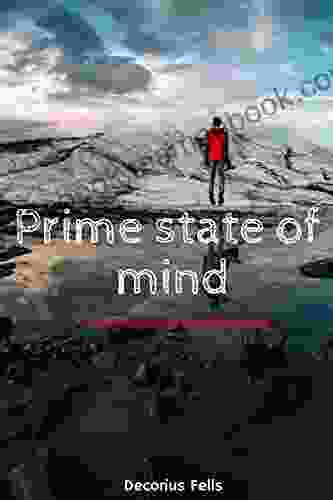Unveiling the Harmony of Words: Metre, Rhythm, and Verse Form in Literature

Within the realm of literature, the dance of words weaves a tapestry of meaning that transcends their literal denotations. Among the essential elements that orchestrate this intricate symphony are metre, rhythm, and verse form. These fundamental components shape the very foundations of poetry, imbuing it with a cadence and structure that captivates the reader's ear and engages their imagination.
Metre: The Underlying Beat
Metre forms the rhythmic backbone of a poem, establishing a predictable pattern of stressed and unstressed syllables. This pattern creates a recognizable pulse that guides the reader's experience, influencing the flow and intonation of the verse. Common metrical patterns include:
4.7 out of 5
| Language | : | English |
| File size | : | 4258 KB |
| Text-to-Speech | : | Enabled |
| Screen Reader | : | Supported |
| Enhanced typesetting | : | Enabled |
| Word Wise | : | Enabled |
| Print length | : | 208 pages |
- Iambic Pentameter: Alternating unstressed and stressed syllables, often used in sonnets and dramatic poetry (e.g., "To be or not to be, that is the question")
- Trochaic Octameter: Unstressed followed by stressed syllables, creating a marching rhythm (e.g., "Listen, my children, and you shall hear / Of the midnight ride of Paul Revere")
- Spondaic Hexameter: Consecutive stressed syllables, imparting a sense of weight and drama (e.g., "This is the forest primeval. The murmuring pines and the hemlocks")
Metre provides a framework for the poem's structure, dictating the length of each line and the placement of accents. It allows poets to create specific effects, ranging from the lilting melody of iambic pentameter to the emphatic march of trochaic octameter.
Rhythm: The Flow of Time
Rhythm, closely intertwined with metre, refers to the overall pattern of sound and silence within a poem. It encompasses the interplay of stressed and unstressed syllables, as well as variations in duration and emphasis. Rhythm creates a sense of movement and dynamics, shaping the poem's pacing and emotional impact.
Poets manipulate rhythm to evoke a wide range of sensations and moods. A regular, steady rhythm can convey a sense of order and control, while an irregular or syncopated rhythm can create tension, excitement, or uncertainty.
Verse Form: Architecture of the Verse
Verse form refers to the overall structure and arrangement of lines within a poem. It encompasses various elements, including:
- Stanza: A group of lines separated by a blank line
- Line: A single horizontal row of words
- Foot: A unit of metre consisting of a combination of stressed and unstressed syllables (e.g., an iamb is an unstressed followed by a stressed syllable)
- Rhyme: Correspondence of sounds between words, usually at the end of lines
- Scheme: A pattern of rhyme, indicating which lines rhyme with each other
Verse form provides a blueprint for the poem, determining its visual appearance and influencing its thematic development. Different verse forms convey distinct qualities: a sonnet's rigid structure suggests a sense of formality and order, while a free verse poem's lack of traditional form allows for greater flexibility and experimentation.
The New Critical Idiom: A Lens of Analysis
The New Critical Idiom, a prominent school of literary criticism during the mid-20th century, emphasized the close analysis of a text's formal elements, including metre, rhythm, and verse form. New Critics believed that these elements played a crucial role in shaping the poem's meaning and effect.
According to the New Critical Idiom, metre, rhythm, and verse form could:
- Convey the poet's tone and attitude
- Create a specific mood or atmosphere
- Emphasize or deconstruct certain words or phrases
- Provide insights into the poem's themes and ideas
Metre, rhythm, and verse form are indispensable components of poetry, working in concert to create a symphony of sound and meaning. By understanding these elements and their interplay, we gain a deeper appreciation for the artistry and complexity of poetic expression. Whether we are analyzing a traditional sonnet or a contemporary free verse poem, metre, rhythm, and verse form continue to serve as essential tools in our exploration of the written word.
Next time you delve into a poem, pay attention to its metre, rhythm, and verse form. Allow these elements to guide your reading experience, enhancing your understanding and appreciation of the poet's craft. For it is through the harmony of words that literature truly takes flight, captivating our imaginations and leaving an enduring mark on our hearts.
4.7 out of 5
| Language | : | English |
| File size | : | 4258 KB |
| Text-to-Speech | : | Enabled |
| Screen Reader | : | Supported |
| Enhanced typesetting | : | Enabled |
| Word Wise | : | Enabled |
| Print length | : | 208 pages |
Do you want to contribute by writing guest posts on this blog?
Please contact us and send us a resume of previous articles that you have written.
 Top Book
Top Book Novel
Novel Fiction
Fiction Nonfiction
Nonfiction Literature
Literature Paperback
Paperback Hardcover
Hardcover E-book
E-book Audiobook
Audiobook Bestseller
Bestseller Classic
Classic Mystery
Mystery Thriller
Thriller Romance
Romance Fantasy
Fantasy Science Fiction
Science Fiction Biography
Biography Memoir
Memoir Autobiography
Autobiography Poetry
Poetry Drama
Drama Historical Fiction
Historical Fiction Self-help
Self-help Young Adult
Young Adult Childrens Books
Childrens Books Graphic Novel
Graphic Novel Anthology
Anthology Series
Series Encyclopedia
Encyclopedia Reference
Reference Guidebook
Guidebook Textbook
Textbook Workbook
Workbook Journal
Journal Diary
Diary Manuscript
Manuscript Folio
Folio Pulp Fiction
Pulp Fiction Short Stories
Short Stories Fairy Tales
Fairy Tales Fables
Fables Mythology
Mythology Philosophy
Philosophy Religion
Religion Spirituality
Spirituality Essays
Essays Critique
Critique Commentary
Commentary Glossary
Glossary Bibliography
Bibliography Index
Index Table of Contents
Table of Contents Preface
Preface Introduction
Introduction Foreword
Foreword Afterword
Afterword Appendices
Appendices Annotations
Annotations Footnotes
Footnotes Epilogue
Epilogue Prologue
Prologue Daniel Peterson
Daniel Peterson Alexander J Fisher
Alexander J Fisher Jodie Isitt
Jodie Isitt J R Malsi
J R Malsi Nate Ciraulo
Nate Ciraulo Daniel Kucan
Daniel Kucan Edward P Jones
Edward P Jones Christina Bennett
Christina Bennett Gayle Trent
Gayle Trent D Brewer
D Brewer Pam Lecky
Pam Lecky Sande Boritz Berger
Sande Boritz Berger Praise Daniels
Praise Daniels Alexander Neubauer
Alexander Neubauer Deanna Sclar
Deanna Sclar J C Allen
J C Allen Kev Partridge
Kev Partridge Octavia Randolph
Octavia Randolph Kathleen Birmingham
Kathleen Birmingham Jennifer Khedr
Jennifer Khedr
Light bulbAdvertise smarter! Our strategic ad space ensures maximum exposure. Reserve your spot today!
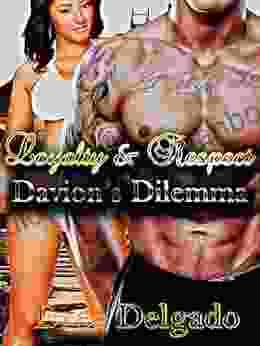
 Chase SimmonsDavion "Dilemma" Drea Delgado: Exploring the Rise of a Young Prodigy in the...
Chase SimmonsDavion "Dilemma" Drea Delgado: Exploring the Rise of a Young Prodigy in the... Mario BenedettiFollow ·10.1k
Mario BenedettiFollow ·10.1k Johnny TurnerFollow ·11.1k
Johnny TurnerFollow ·11.1k Robert ReedFollow ·13.8k
Robert ReedFollow ·13.8k Garrett PowellFollow ·5.1k
Garrett PowellFollow ·5.1k Billy FosterFollow ·9.9k
Billy FosterFollow ·9.9k Graham BlairFollow ·15.3k
Graham BlairFollow ·15.3k Nick TurnerFollow ·6k
Nick TurnerFollow ·6k Salman RushdieFollow ·7.1k
Salman RushdieFollow ·7.1k
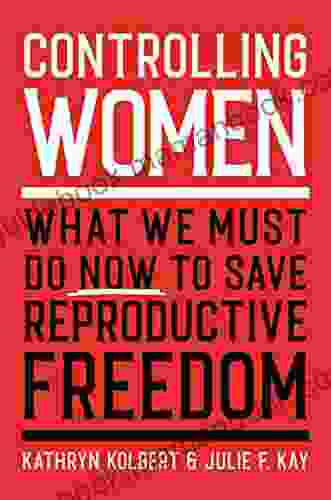
 Leslie Carter
Leslie CarterWhat We Must Do Now To Save Reproductive Freedom
Roe v. Wade, the landmark...

 Cade Simmons
Cade SimmonsThe Unbreakable Bond: Unveiling the Connection Between...
In the realm of...
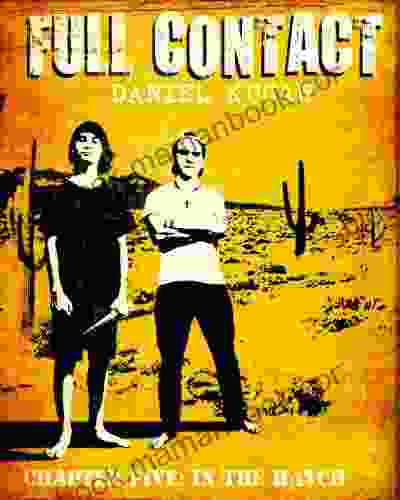
 Roy Bell
Roy BellFull Contact Chapter Five: The Final Chapter of the Hatch...
In this gripping to the Hatch saga, we...
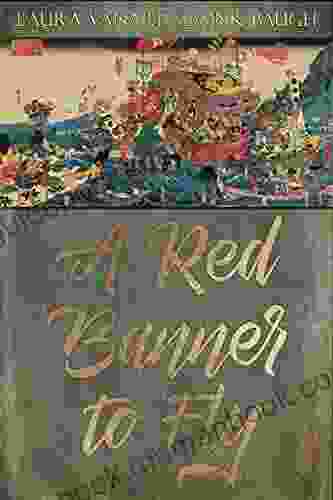
 Fred Foster
Fred FosterUnveiling the Tale of the Genpei Wars: A Comprehensive...
Deep within the annals of Japanese history,...
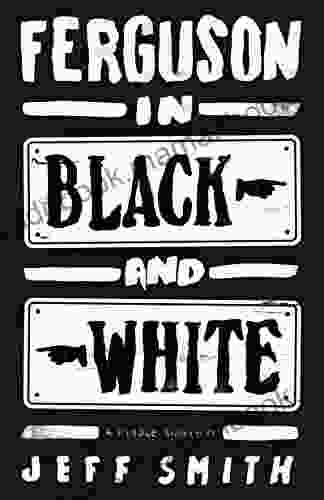
 Jaden Cox
Jaden CoxFerguson in Black and White: A Profound Examination of...
The Ferguson tragedy, sparked by the fatal...
4.7 out of 5
| Language | : | English |
| File size | : | 4258 KB |
| Text-to-Speech | : | Enabled |
| Screen Reader | : | Supported |
| Enhanced typesetting | : | Enabled |
| Word Wise | : | Enabled |
| Print length | : | 208 pages |


